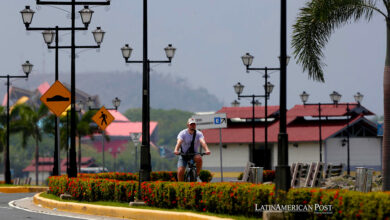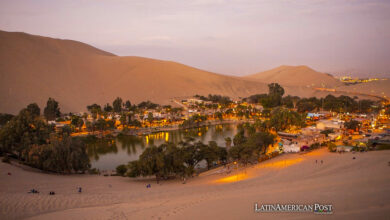Biodivercities: The Latino Project that Combines Cement and Nature
More and more strategies are managed to make nature an ally of the social and economic development of a city, and not see it as an enemy. We tell you what the biodiversity project refers to.

Photo: World Economic Forum
LatinAmerican Post | Christopher Ramírez
Listen to this article
Leer en español: Biodivercities: el proyecto latino que combina cemento y naturaleza
For a couple of years, the World Economic Forum (WEF) has been talking about Biodivercities (or BiodiverCiudades in Spanish), a concept that aims to improve the relationship between cities (and their growth) with the environment. Said concept, which is more of a program that the WEF created in support of the Colombian Government, has the purpose of demonstrating that cement and nature can go hand in hand, as long as the former is planned in favor of maintaining and promoting care of the second.
"Cities are the engine of the global economy, contributing 80% of world GDP, but their exponential growth in recent decades has come at the expense of nature," explains the report "BiodiverCities by 2030: Transforming the relationship of cities with nature”.
Why is it important to evolve towards a biodivercities?
According to this international organization, more than 50% of the world's population lives in cities. Now, it is expected that in a little less than 30 years (2050), this figure will increase to 68%, that is, to almost 7 billion people. This population growth is proportional to the way in which the "built environment has grown by two thirds in the first 12 years of the 21st century, which has caused the degradation of local ecosystems and the loss of habitats."
Likewise, "urban areas are also responsible for more than 75% of global carbon emissions, accelerating climate change and causing further loss of nature."
With this in mind, the Forum, in collaboration with the Colombian Executive and the Alexander von Humboldt Biological Resources Research Institute, created a commission of more than 30 people, whose members are experts from the "public and private sectors, academia and the civil society". The idea is that this human team manages to collect information that serves to originate sustainable and inclusive practices that make nature the center of attention when developing cities on the planet. In short, to generate alternatives that allow to achieve a positive urban development.
“What is wanted is to reconnect the built environment with nature; give equal access to nature to all city dwellers, and promote an economy based on the sustainable use of it", were the words given by the former president of Colombia, Iván Duque, during his speech at the Davos Forum in January of 2022. At that time, the project was explained. However, its projection is to 2030.
It may interest you: Solar Energy in Space, ¿Dream or Possible Reality?
How can you be a BiodiverCity?
In said intervention, which is published on the website of the World Economic Forum, it is specified that for a city to begin to evolve into a 'BiodiverCity', the first thing it must do is change its focus from a less consumerist one to a more natural one. Therefore, the term to keep in mind in this situation is “nature-based solutions” (NbS). “By shifting investment to NbS for infrastructure, cities can take advantage of natural ecosystems to provide the key functions of conventional gray interventions, ”Duque indicated at the time.
For the Alexander von Humboldt Biological Resources Research Institute, biodivercitie's approach is to restore the balance between urban development and biodiversity preservation. "Heal urban-rural links; develop circular economy models and innovative actions for economic competitiveness; improve governance schemes that promote nature-based solutions; and promote a new mindset and a new set of values," they point out.
In this sense, what is sought with this project is that governments do not think of the “green change” as an expense that will impede social development, but as an opportunity to take care of the planet with nature as "a competitive advantage". In fact, with NBS focused on a city's infrastructure, such activity could cost 50% less than “grey alternatives alone”. Also, it generates 28% more in other added values such as a reduction in the carbon footprint, clean water and air, better population health, and social and economic growth in sectors allied to construction such as real estate and tourism.
Thus, the "sponge cities" in China, which help prevent flooding while collecting water in the subsoil in order to reinforce aquifers for times of drought; or the "planetary health diets" in Quezon City (Philippines) and Copenhagen (Denmark) that seek to improve agricultural and livestock practices in order to reduce greenhouse gases and the loss of biodiversity, are some examples of how a city can bet on nature as a valuable resource, both economically and ethically.
As part of this project, a book has been published that aims to function as a guide for the formulation of public policies and planning in cities.




